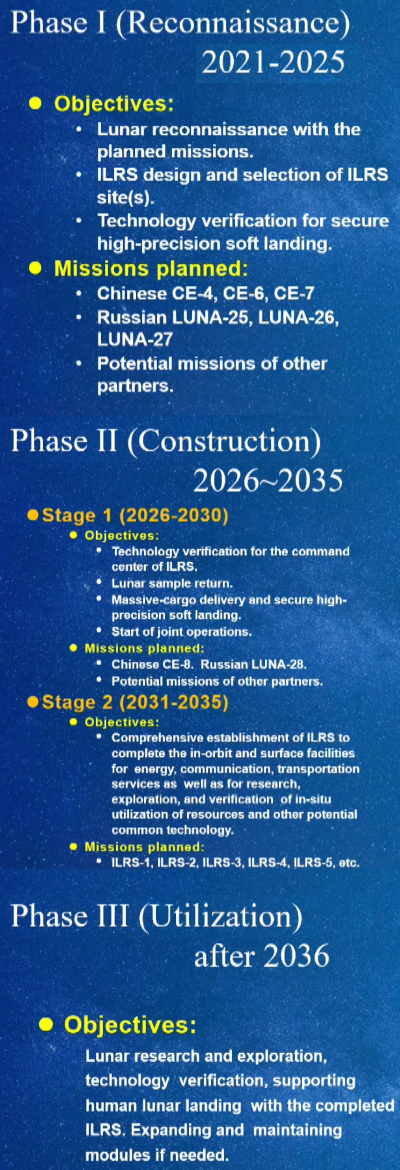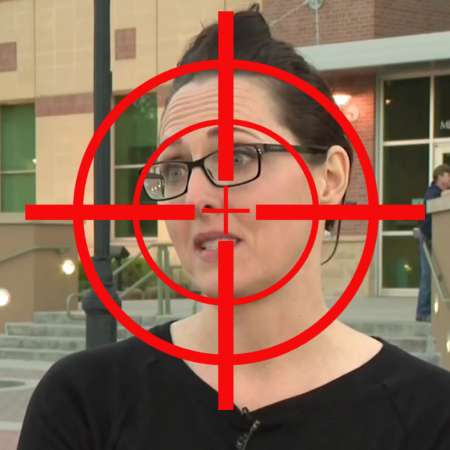
The so-called Chinese-Russian partnership to explore
the Moon.
In 2021 China and Russia announced a long term plan to jointly explore the Moon, with the project eventually leading to the construction of a joint lunar base.
The graphic to the right comes from that announcement. It lists all lunar missions being built by both Russia and China, and outlined the step-by-step process in which both will work together to build that base.
At the time I noted the likelihood of serious Russian delays, since confirmed. I then noted this:
This decision [by Russia to delay] also demonstrates that Russia’s so-called partnership with China to explore the Moon …is pure hogwash.
Russia’s track record in space since the fall of the Soviet Union has been poor. It hasn’t been able to complete almost any project on time, with many dying stillborn. Most of the time Russian authorities make big announcements of big plans, but nothing ever gets built.
It appears now that China has recognized this reality. In presentations at the International Astronautical Congress (IAC) in Paris last week, China repeatedly offered payload space on its many planetary missions — as listed to the right — to outside nations and even private concerns.
Based on China’s recent track record, those missions will fly, and will likely fly close to their predicted launch dates. Since its space program is designed by China to promote itself, it hopes to get others to participate for propaganda reasons. It also hopes it can then steal some technology from that partnership, as also shown by its long term track record.
What China’s presentations at IAC did not do, however, was mention Russia.
The only visible representation of potential Russian [participation] came in a slide listing future Chinese Chang’e and Russia Luna missions, alongside graphics of the Chinese Long March 9 super heavy-lift rocket and a large Russian launch vehicle. The slide was taken straight from ILRS handbook released to coincide with the St. Petersburg event in 2021, and Russia nor its missions were not explicitly named.
It is hard to say if the lack of representation of Russian involvement reflects a change in Beijing’s thinking or a sensitivity to the current geopolitical context. But China appears to face a dilemma for its grandest space ambitions so far.
It appears China has recognized the paper tiger nature of its partnership with Russia. It hasn’t precluded the partnership, but it realizes that its program to explore the Moon and the solar system must move forward independent of Russia, or else Russia will act like a lead weight to slow it down.











